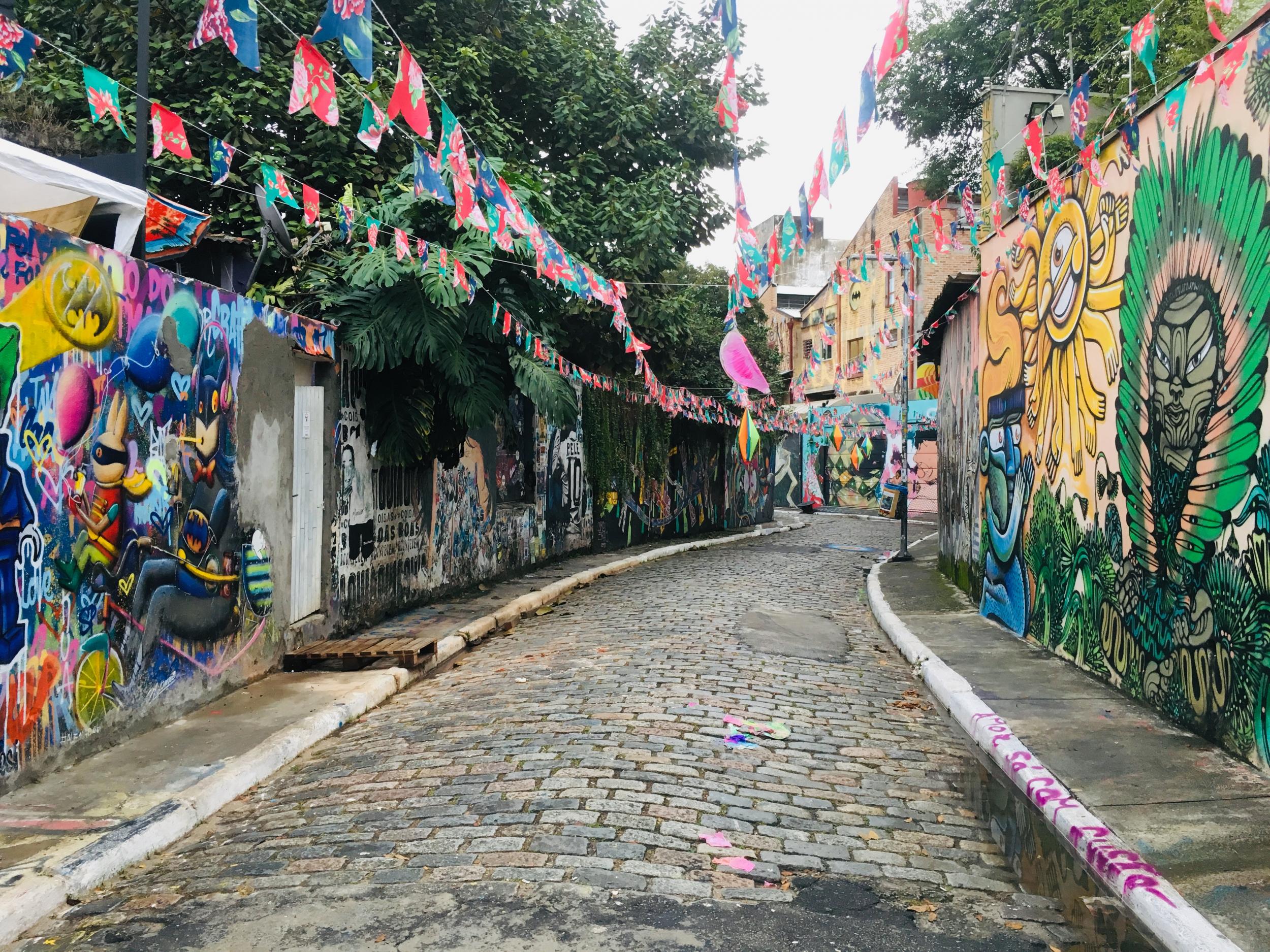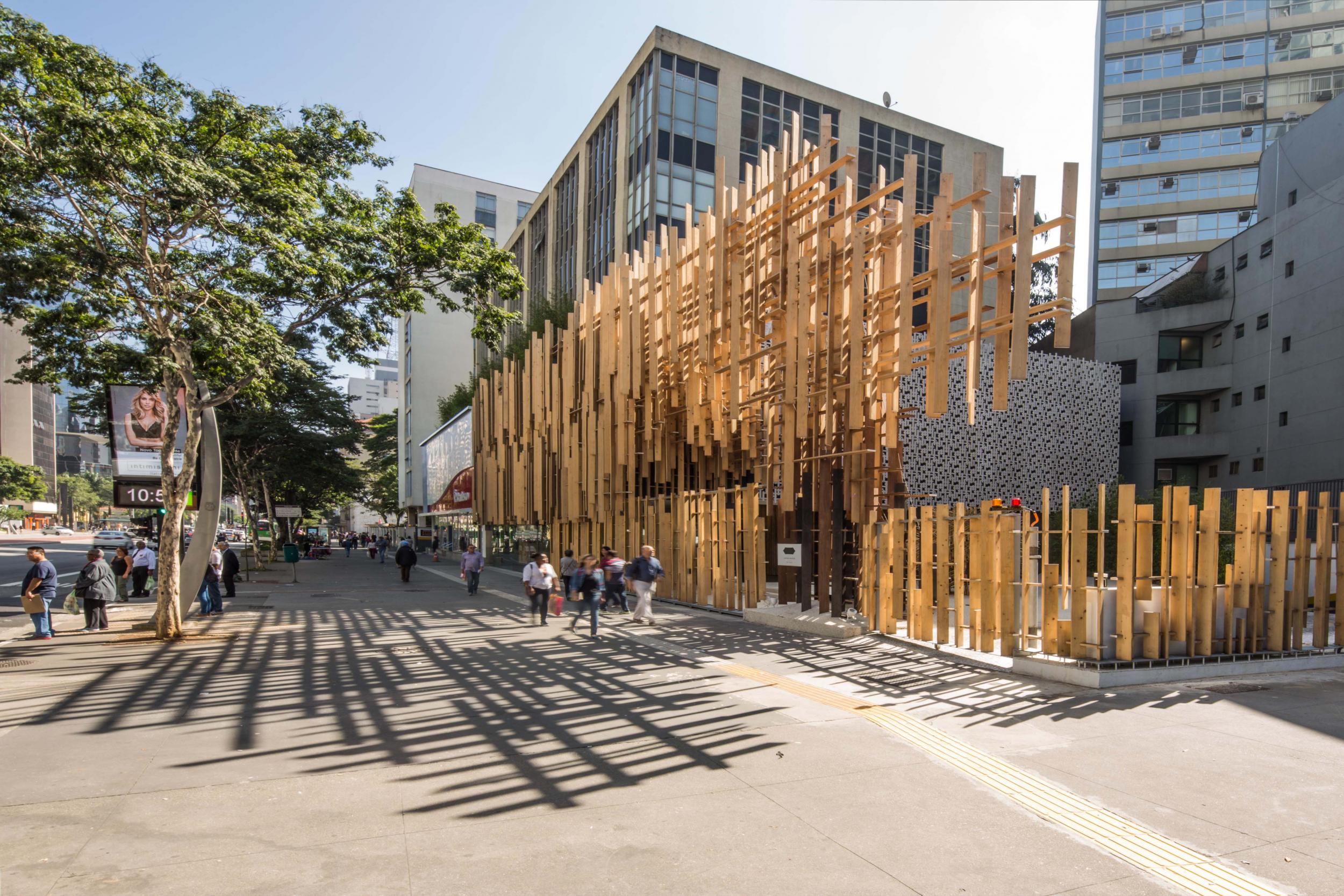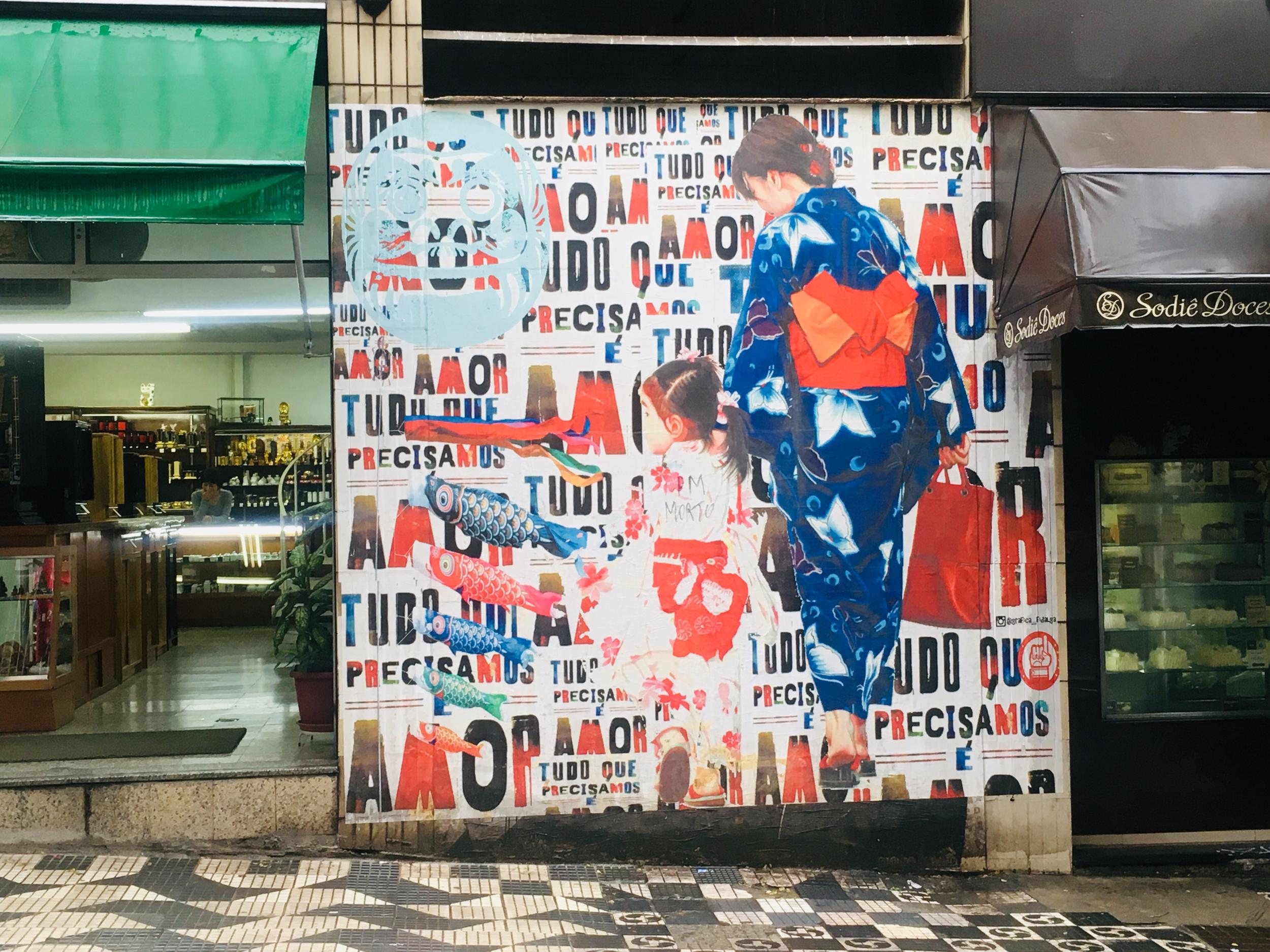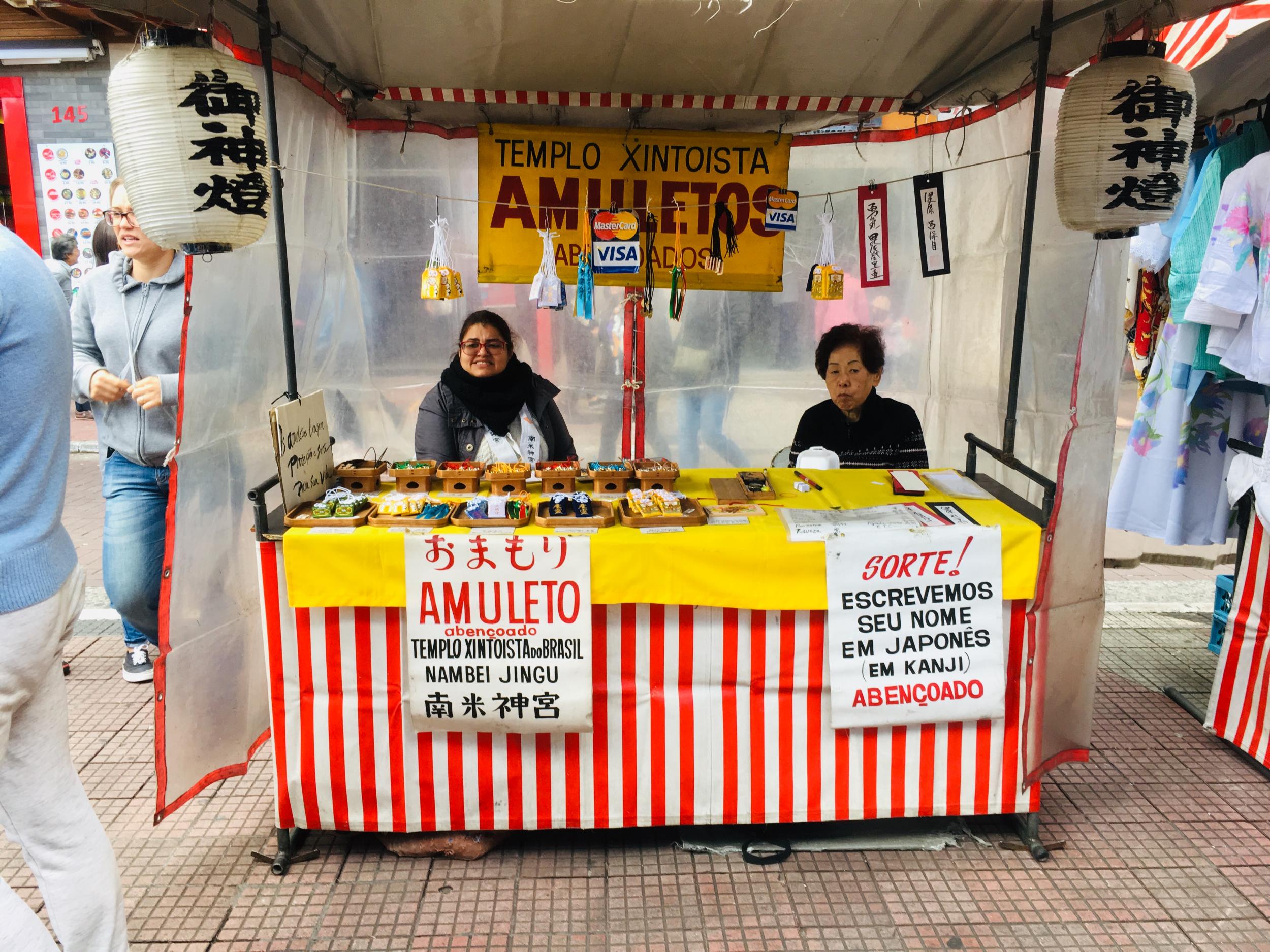Welcome to Liberdade, the world’s biggest Japantown that’s in Brazil
Tamara Hinson finds out why the Brazilian city of Sao Paulo has such strong Japanese ties


I’m sitting in a beautiful, wood-clad building, watching a lady slide long-stemmed blooms into a vase while explaining the basics of Japanese flower arranging. The lady might look Japanese, but she’s Brazilian, descended from migrants who swapped East Asia for South America in the early 1900s. The workshop is one of many events organised by Japan House, an institute run by the Japanese government and designed to provide an insight into Japanese culture.
This building in Sao Paulo, created by the architect behind Tokyo’s Olympic stadium, is clad in Japanese wood, and interior walls are lined with Japanese washi paper. On a first floor patio, above the palm tree-lined Paulista Avenue – the city’s main artery – there’s a tiny bamboo forest, and on the ground floor, near Japan House’s café, a library filled with books which visitors are invited to borrow. The beautifully-curated gift shop is a treasure trove of Japan’s best bits – woodblock prints, origami kits and Japanese tableware.
Although there are Japan Houses in other countries, Sao Paulo’s has the strongest ties with Japan. Marcelo Araujo, its president, tells me that he has regular meetings with Japan’s consulate general in Sao Paulo and that it’s the only city with connections to every Japanese prefecture. “Some thought that the Japan House should be in the Liberdade neighbourhood,” admits Araujo. “But Paulista Avenue is the city’s heart, and this place is for everyone.”
Nearby Liberdade, otherwise known as the world’s biggest Japantown, might not have the Japan House, but it does have the Museum of Japanese Immigration. And an enormous torii gate, towering over one end of Rua Galvão Bueno, plus paper lantern-like street lights dangling from elegant red pillars. I discover a small, bamboo-filled Japanese garden and beautiful street art murals – one depicting a kimono-wearing Japanese lady surrounded by brightly coloured fish. Narrow side streets are filled with Japanese restaurants and izakayas (Japanese pubs), many with traditional noren door curtains.
The displays of fruit in Liberdade’s grocery stores resemble the ones in Tokyo’s depachikas (food halls). Alongside acai berries and papayas are enormous, individually-packaged mangos and melons – a nod to the Japanese love of gifting fruit.
The Japanese weren’t always made to feel so welcome. At the Museum of Japanese Immigration, I learn that two events prompted their arrival. In 1850, Brazil’s slave trade was abolished. The country relied heavily on slaves – it’s why the city of Salvador has the highest number of people of African descent outside Africa. In Sao Paulo, slaves worked the coffee plantations encircling the city. At the time, Japan was in crisis – the end of feudalism had left many rural Japanese destitute. The labour shortage on Brazil’s plantations prompted the two governments to sign a treaty permitting Japanese migration to Brazil. The first wave arrived in 1908, onboard the Kasato Maru cargo ship.

The majority headed to Sao Paulo, which had the highest density of coffee plantations, many owned by farmers who treated their Japanese employees in the same way they’d treated their African slaves. When demand for labour decreased, the majority of Japanese workers didn’t have the means to return home. Instead, they preserved their culture by creating communities (such as the one in Liberdade), cultural associations and schools – there were 200 Japanese schools in Sao Paulo by 1932. They formed cooperatives and manufactured Japanese goods: silk, green tea and tatami mats, made from imported igusa reeds.
My guide at the Museum of Japanese Immigration is Sao Paulo local Patricia Takehana, whose grandparents migrated from Japan to Brazil. Her parents were born in rural Brazil, but moved to the city to attend university. She tells me she’s been to Japan three times but speaks little Japanese, and considers herself Brazilian, adding that if Japan and Brazil faced each other in a football match, she’d probably root for Brazil.
Today 3.8 million people of Japanese descent live outside Japan. Half of these are in Brazil. Funnily enough, many seem to be at my hotel, the InterContinental Sao Paulo. Close to Liberdade, it’s popular with Japanese travellers. There are matcha tea sachets in my mini-bar and although there might not be an onsen, the property has the highest number of bath tubs of any Sao Paulo hotel. Barman Sadrac tells me that one of the most popular cocktails is the sakerinha – a Japanese version (it’s made with sake, not cachaça) of the caipirinha, Brazil’s national drink.

Further proof that Sao Paulo’s connections with Japan remain as strong as ever is the weekend market which fills Liberdade’s Praça da Liberdade. There’s every type of Japanese food for sale, from ramen to okonomiyaki, and other stalls sell manga artwork and miniature torii gates emblazoned with “I love Sao Paulo”.

And then there’s Ibirapuera Park’s Japanese pavilion, with its koi carp-filled pond and priceless artefacts – including an Edo-period sword and 12th-century Japanese picture scrolls – donated by Sao Paulo’s Japanese community. My favourite bit is the pavilion’s grounds, where I find a Brazilian garden, filled with native species and directly connected to a Japanese Zen garden.
It reminds me of something said by Patricia Takehana: “I’ve got the best of both worlds right here.”
Travel essentials
Getting there
Latam flies from London Heathrow to Sao Paulo from £470 return.
Staying there
Doubles at the Intercontinental Sao Paulo from £165.
Join our commenting forum
Join thought-provoking conversations, follow other Independent readers and see their replies
Comments